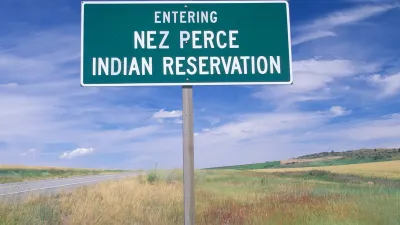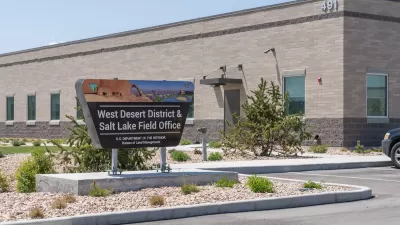A new study mandated by the federal Resources Planning Act predicts that developed land in the U.S. will increase by 41 percent in the next five decades. Such development could have dramatic impacts on our natural resources and ecosystems.
Kaid Benfield discusses the findings of a study conducted by scientists at the US Forest Service and partners at universities, non-profits and other agencies. Their predictions show that the consequences of continued expansion of urban and developed land could have monumental impacts on our natural resources, including the loss of up to 34 million acres of forested land and increased water shortages.
According to Benfield, key themes from the findings include:
- Land development will continue to threaten the integrity of natural ecosystems;
- Climate change will alter natural ecosystems and affect their ability to provide goods and services;
- Competition for goods and services from natural ecosystems will increase;
- Geographic variation will require regional and local strategies to address resource management issues.
"As troubling as the trends and forecasts are for forests and farms lost to development, it does not have to be this way. We need to stop the madness. Market preferences are now trending in favor of closer-in, more walkable living. Let’s build future development that responds, conserving the landscape in the process," concludes Benfield, who details some tactics available for achieving such a goal.
Hazel Borys sounds a similar note in discussing the 41 million acres of rural land that the US lost to development from 1982 to 2007, the need to reduce this rate of development, and what several ogranizations and local governments are doing to preserve rural lands.
FULL STORY: Suburban sprawl could destroy up to 34 million acres of forests, says new study

Alabama: Trump Terminates Settlements for Black Communities Harmed By Raw Sewage
Trump deemed the landmark civil rights agreement “illegal DEI and environmental justice policy.”

Planetizen Federal Action Tracker
A weekly monitor of how Trump’s orders and actions are impacting planners and planning in America.

Why Should We Subsidize Public Transportation?
Many public transit agencies face financial stress due to rising costs, declining fare revenue, and declining subsidies. Transit advocates must provide a strong business case for increasing public transit funding.

Understanding Road Diets
An explainer from Momentum highlights the advantages of reducing vehicle lanes in favor of more bike, transit, and pedestrian infrastructure.

New California Law Regulates Warehouse Pollution
A new law tightens building and emissions regulations for large distribution warehouses to mitigate air pollution and traffic in surrounding communities.

Phoenix Announces Opening Date for Light Rail Extension
The South Central extension will connect South Phoenix to downtown and other major hubs starting on June 7.
Urban Design for Planners 1: Software Tools
This six-course series explores essential urban design concepts using open source software and equips planners with the tools they need to participate fully in the urban design process.
Planning for Universal Design
Learn the tools for implementing Universal Design in planning regulations.
Caltrans
Smith Gee Studio
Institute for Housing and Urban Development Studies (IHS)
City of Grandview
Harvard GSD Executive Education
Toledo-Lucas County Plan Commissions
Salt Lake City
NYU Wagner Graduate School of Public Service





























